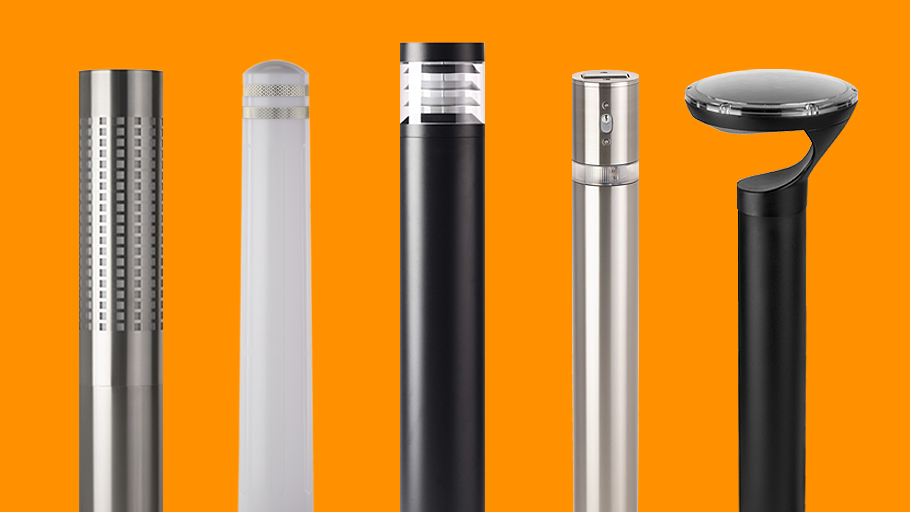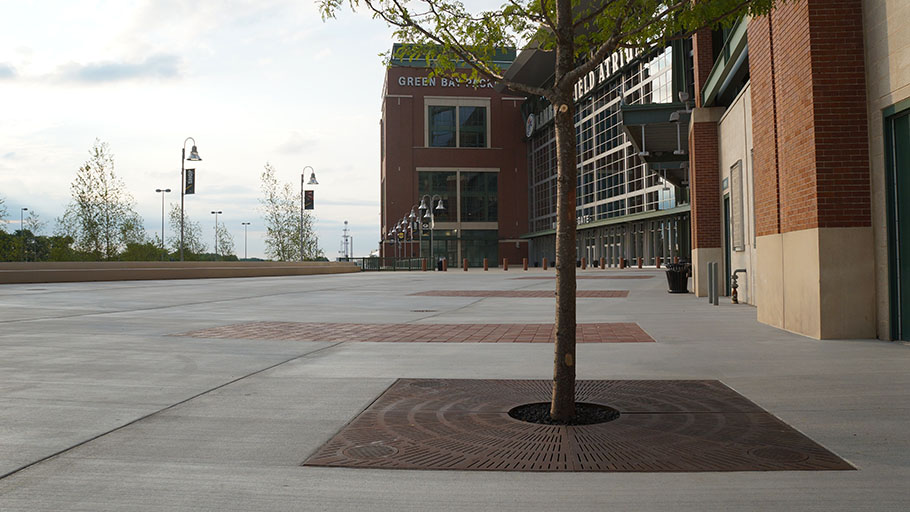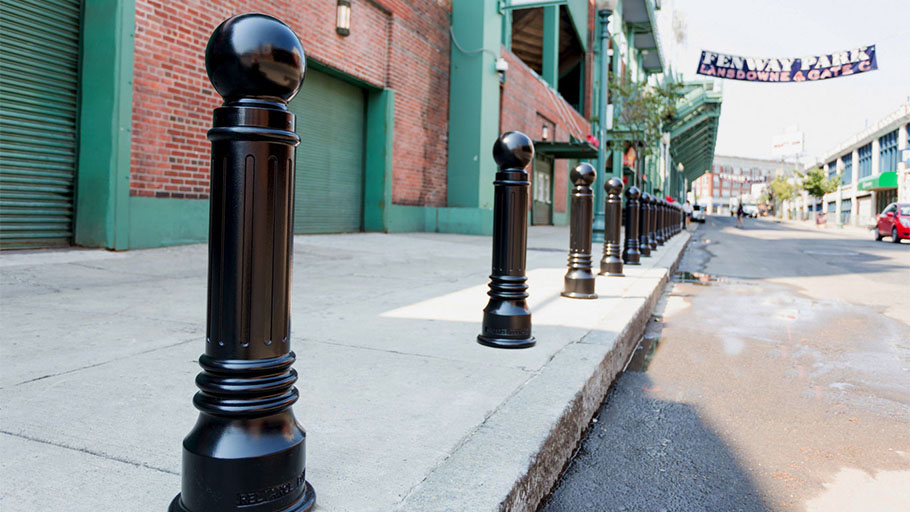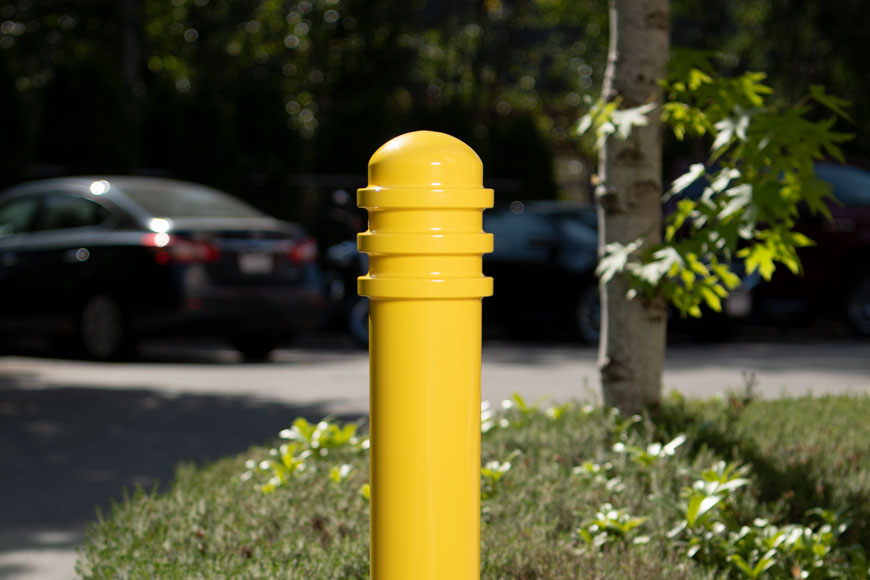Tree grates may be composed of solid cast iron, but they are adaptable
How can city trees survive urban life?
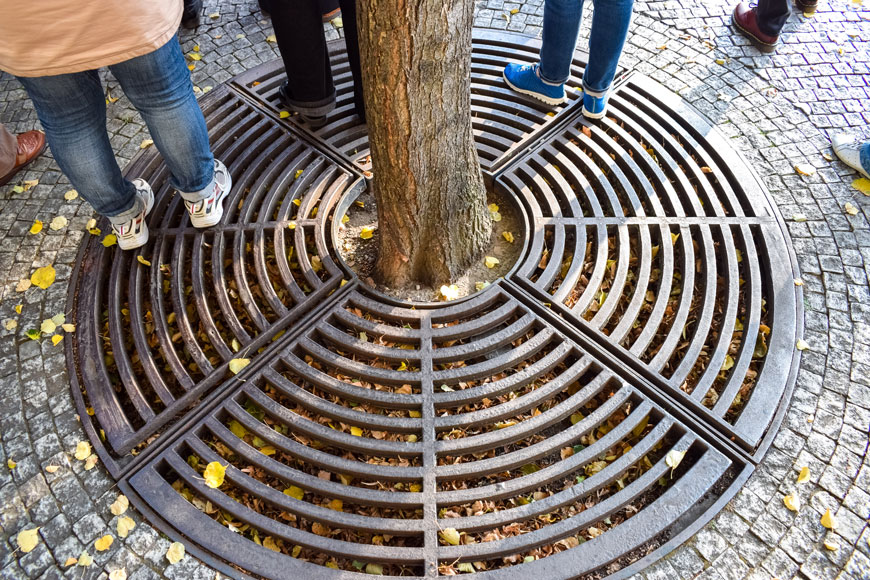
Tree grates are an ideal solution for urban trees that must survive the abrasion that comes with bustling city life.
Greenspace is an attractive feature for any cityscape. However, the environment can be exceptionally demanding. Aggressive traffic from pedestrians, as well as from mail and delivery carts, are a constant presence year-round, so city trees and surrounding soil are subject to daily abuse. This leads to compacted soil around tree roots, a danger to healthy root development.
Tree grates are a type of metal grating that are installed at the base of trees to guard the soil and rooting systems. Grate slots allow sunlight, water, and air to pass through, ensuring trees still have plenty of access to nutrients. Tree grates blend into the urban background while providing safe enclosures for growing trees.
Tree grate designs have evolved
Tree grates make sense for urban spaces. They are practical but offer visual appeal, and respect the safety and accessibility of all pedestrians. Since the Americans with Disabilities Act of 1990 was introduced, tree grate slots have become ADA compliant. This means that canes, crutches, and wheelchairs must be able to travel over them with ease, without any dangers of falling through. Furthermore, areas expecting high foot traffic require tree grates with smaller openings, between 1/4 to 3/8 inches, to ensure pedestrian safety. This also prevents litter and debris from accumulating in the tree well, as well as minimize weed growth.
Modern tree grates work to enhance surrounding landscapes and prevent unsightly overgrown tree roots that eventually become tripping hazards. Typically made from durable cast iron, tree grates are very tough, but their looks are far from industrial. From sleek and radial, to traditional and decorative, a wide range of tree grate designs exist to complement any urban environment.
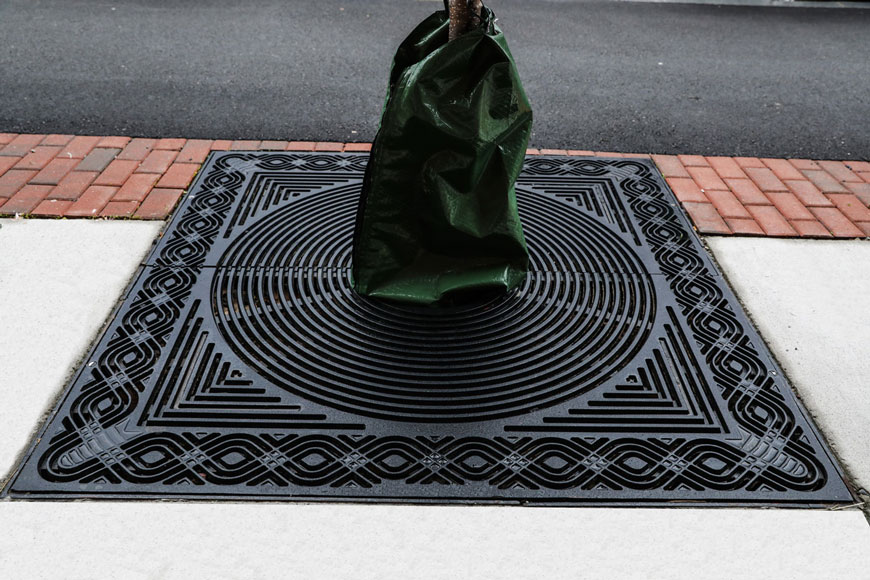
Tree grates for every stage of growth
Tree grates come in all shapes and sizes. Furthermore, they can be made to accommodate various stages of tree growth. Trees are alive, so their trunk sizes will change over the years. For larger trees, without periodic intervention, the tree trunk can grow to the point where it is pushing into the grate. This causes injury to the trunk’s surface. In order to successfully protect trees for their entire lifespan, many tree grates are designed for expansion. As the trees grow, the tree grates are expanded accordingly to fit their changing needs.
Tree grates are expanded by removing the inner center rings, allowing the tree grate opening to be enlarged in increments. When the center rings are removed, the tree grate opening diameter widens enough to house a larger tree trunk. When streetscape planning for city trees, ensure that the tree grates will expand enough to accommodate the future, mature sizes of trees.
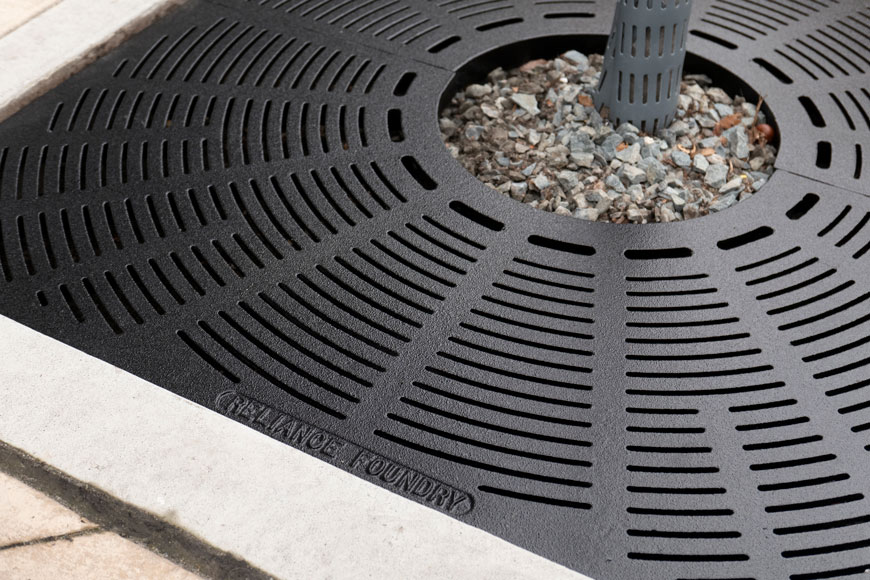
How to expand tree grates
Tree grates can be expanded quite easily by using a cutting wheel to cut or score through the inner ring casting. This can be performed on site. It is important to accurately determine the new tree grate opening diameter before proceeding. It should have sufficient clearance to accommodate the growing tree; however, be cautious of making the opening diameter too large as this will invite garbage and other debris.
The most common way to expand a cast iron tree grate is by using a portable hard wheel grinder with an abrasive wheel. If a cutting wheel is not available, a power hack saw or sharp cold chisel may be used instead. Thin portions of the inner ring can be cut all the way through with the wheel. For thicker areas, start by scoring the cast iron approximately half way through the grinder. Once the cast iron is partly scored through, support the casting behind the break, and deliver a sharp blow with a heavy hammer. The casting will break at the score line. Continue this process until all the desired inner rings are removed, resulting in the increase of the tree grate’s inner diameter.
Follow these easy steps to expand tree grates:
- Determine the inner rings that will be cut off to expand the tree grate.
- Use a portable hard wheel grinder to cut off the thin portions of the casting first.
- For thicker areas of the casting, use the cutting wheel to score halfway through the casting.
- Support the scored casting behind the break.
- Deliver a sharp blow to the casting with a heavy hammer; it will break at the score line.
- Repeat the above steps for all tree grate pieces (tree grates typically come in two-piece or four-piece configurations).
Expandable designs for versatile tree grates
Versatility is integral for hardscape products that protect living, organic elements that change or grow over time. From an aesthetic perspective, designs must also be versatile and keep up with surrounding infrastructure, easily matching a range of architectural styles. Decorative tree grates are unique hardscape products that are a perfect fit for any fast-paced city, offering the durability of cast iron while retaining a sense of adaptability.

